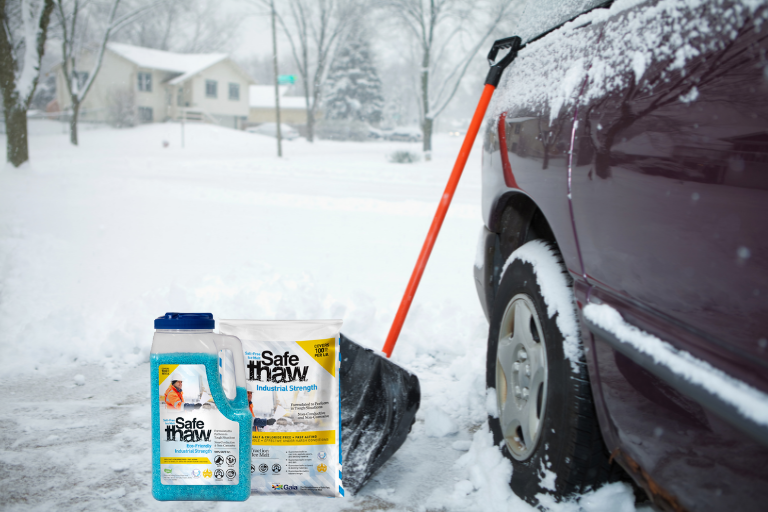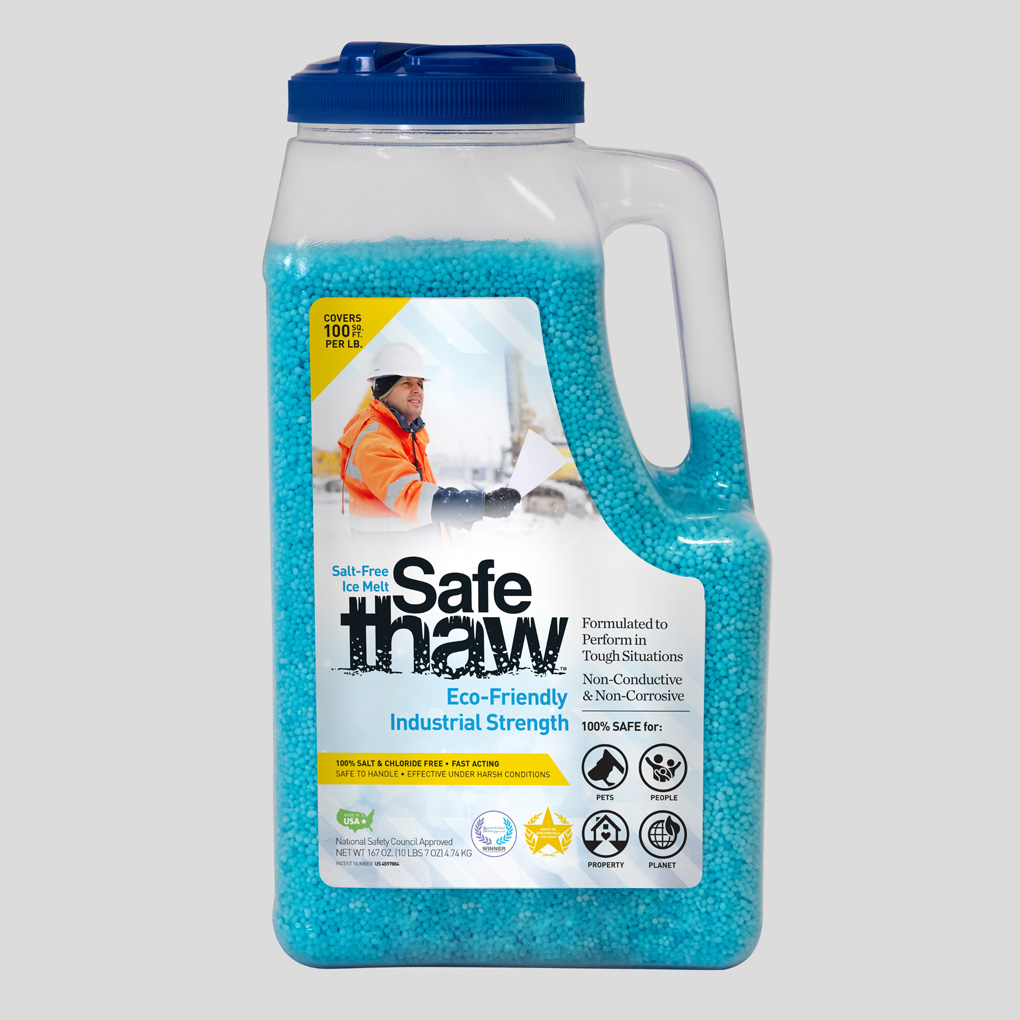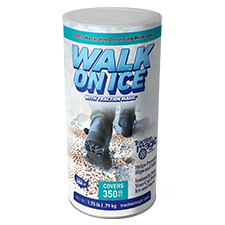When Does Ice Truly Begin To Melt?

Every winter, we’re greeted with the chilling touch of icy pathways, roads, and landscapes. While the sight of a winter wonderland can be mesmerizing, ice can pose serious risks, especially when it forms on walkways or roads. This raises an important question: when does ice melt? Understanding the science behind ice melt can help in not only predicting when ice will vanish but also in effectively combating it.

Frozen Driveways? Melt the Ice Away with Safe Thaw!
Safe Thaw was created as the ice management solution for tough winter environments. Ideal in commercial and industrial properties, shops, government agencies, bridges, and construction.
The Fundamental Science: At What Temp Does Ice Melt?
The simple answer to the question- when does ice melt and “at what temp does ice melt?” is 0°C or 32°F. This temperature is the melting point of ice under normal atmospheric pressure. At this temperature, ice undergoes a phase transition from a solid to a liquid form.
However, it’s crucial to understand that the actual melting process can be influenced by various factors. Pressure, for instance, can alter the melting point. Under increased pressure, ice tends to melt at a slightly lower temperature. This is the reason skaters can glide on ice; the pressure exerted by the blade lowers the melting point right beneath it, creating a tiny layer of water that reduces friction.
The Influence Of Surrounding Environments
While the standard melting point of ice is 0°C, the surrounding environment can play a significant role in accelerating or decelerating the melting process. Wind, sunlight, humidity, and other environmental conditions can affect how quickly ice turns into water.
Sunlight, with its ability to raise temperatures and radiate heat, can expedite the melting process. On the other hand, a windy, cloudy day might make the environment feel colder than the actual temperature, thus slowing down the rate of melt.
Winter Storms Are Here!
Stay Safe with Our 100% Salt And Chloride-Free, Pet Safe Ice Melt.
The Role Of Salts And Melting Agents
When discussing when ice melts, it’s essential to consider external agents that might be applied to hasten the process. Traditional methods involve using rock salt to melt ice on roads and pathways. But how does salt affect the melting point of ice?
Salt disrupts the structure of ice, creating a solution that has a lower freezing point than pure water. Consequently, even at temperatures below 0°C, the presence of salt can induce melting. However, while salt is effective, it has its downsides. It can be harmful to pets, plants, and the environment.
The Safe Thaw Advantage
Enter Safe Thaw, a chemical and toxin-free, industrial-use ice melt. Designed with the environment and user safety in mind, Safe Thaw offers a sustainable alternative to traditional rock salt. Its unique composition ensures effective ice melting without the harmful effects associated with other agents.
By opting for Safe Thaw, users are not only ensuring a quicker response to icy conditions but are also choosing a solution that respects nature and the broader environment.
100% Salt & Chloride-Free Ice Melt for Winter Storm Protection.
Final Thoughts
While the question, “when does ice melt?” might seem straightforward, the actual melting process is influenced by a myriad of factors, from environmental conditions to external agents. For those seeking a dependable, eco-friendly solution, Safe Thaw offers the perfect blend of efficiency and environmental consciousness. So, the next time you find yourself combating icy conditions, remember that understanding the science behind melting can help you make informed decisions.
Try Also Our Other Winter Safety Products:
Safe Paw
The Original and #1 Selling Pet and Child Safe Ice Melt for over 20 years. Guaranteed environmentally safe –It won’t harm animals or children, and it won’t damage your property. That’s Safe Paw. Safe Paw can change how winter affects our planet.

Walk On Ice
The handy disposable canister can be taken everywhere, with the same 100% naturally occurring minerals that provide instant traction on ice or snow. Use it on sidewalks, steps, or as an instant traction agent for your car.



